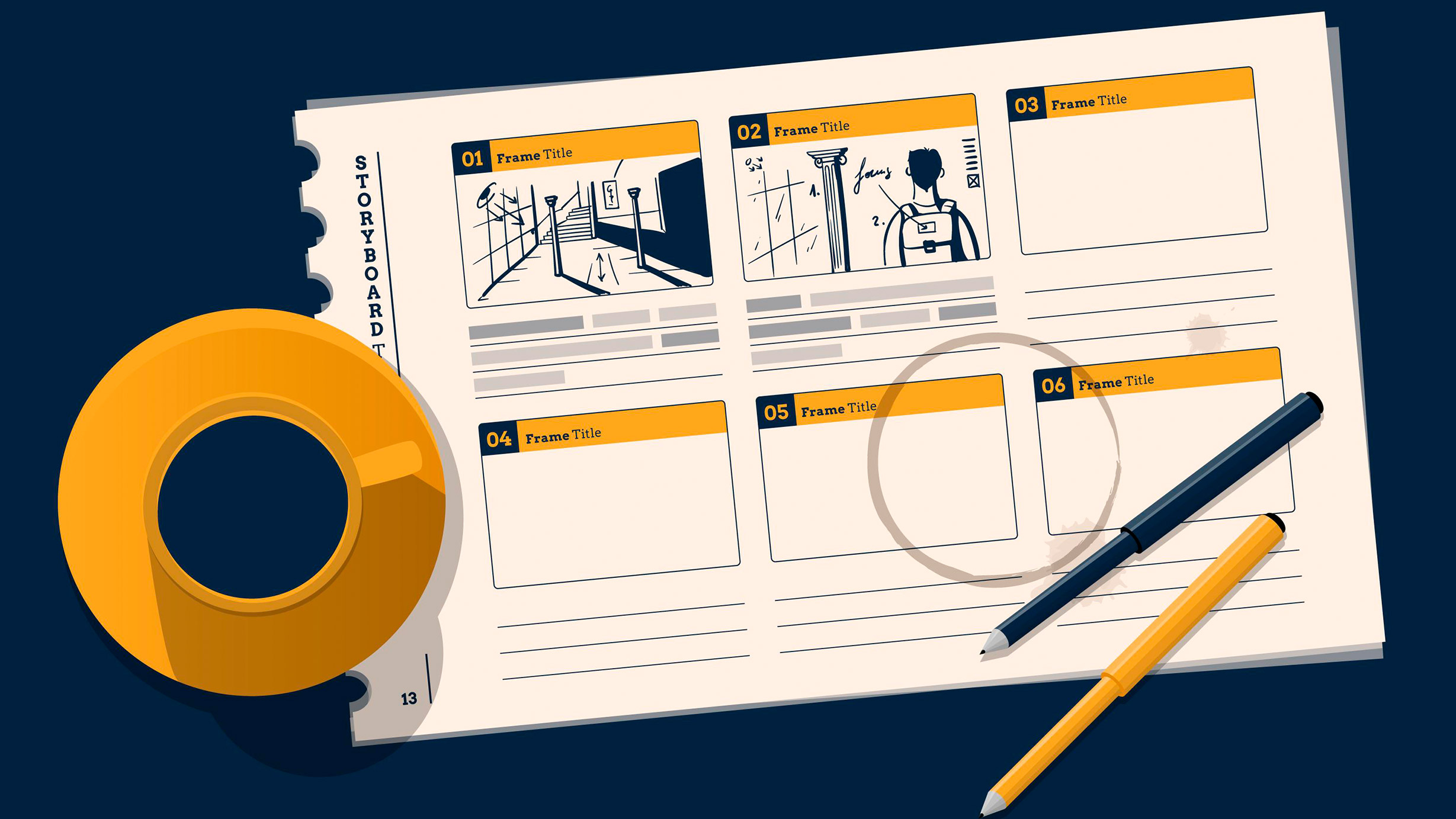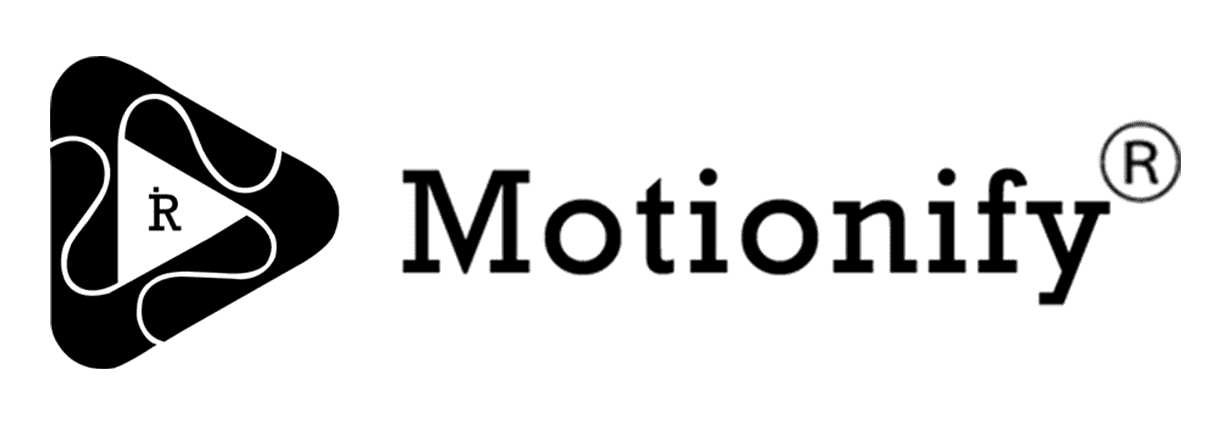
Storyboarding Secrets Revealed: Motionify’s Insider Insights for Crafting Compelling Visual Narratives
I. Introduction
Overview of the importance of storyboarding in the video production process.
Storyboarding plays a crucial role in the video production process as it serves as the blueprint for the entire project. It is essentially a visual representation of the script or concept, outlining the sequence of shots, camera angles, and visual elements that will be used to bring the story to life. Here’s an overview of the importance of storyboarding:
Visualization of Ideas:
Storyboarding allows filmmakers and creatives to visualize their ideas and concepts before they are brought to life on screen. It provides a tangible way to see how the story will unfold, helping to refine and enhance the narrative.
Planning and Organization:
Storyboarding helps in planning and organizing the production process more effectively. By breaking down the script into individual shots, filmmakers can identify the specific scenes, locations, and props needed for each shot, streamlining the production process and minimizing potential delays or errors.
Communication and Collaboration:
Storyboarding serves as a visual communication tool that helps filmmakers convey their vision to the production team, including directors, cinematographers, editors, and designers. It ensures that everyone is on the same page and working towards a common goal, fostering collaboration and teamwork.
Problem-Solving and Creativity:
Storyboarding allows filmmakers to experiment with different ideas, compositions, and visual techniques in a low-risk environment. It provides an opportunity to address potential challenges or issues before they arise during the actual filming process, fostering creativity and innovation.
Cost and Time Efficiency:
Effective storyboarding can help save time and money by identifying and addressing potential issues early in the production process. By having a clear roadmap of the project from the outset, filmmakers can avoid unnecessary reshoots or revisions, ultimately leading to a more efficient and cost-effective production.
Introduction to Motionify as a leader in creative video production and their expertise in crafting compelling visual narratives.
Welcome to Motionify, where creativity meets innovation in the world of video production. As a leader in the industry, Motionify is dedicated to crafting compelling visual narratives that captivate audiences and elevate brands to new heights. With our passion for storytelling and commitment to excellence, we have established ourselves as a trusted partner for clients seeking high-quality video content that makes a lasting impact.
At Motionify, we understand the power of visual storytelling to engage, inspire, and connect with audiences on a deeper level. Our team of experienced professionals brings together a diverse range of skills and expertise, from cinematography and animation to visual effects and editing. With a keen eye for detail and a dedication to pushing creative boundaries, we work tirelessly to bring our clients’ visions to life in ways that are both visually stunning and emotionally resonant.
What sets Motionify apart is our relentless pursuit of excellence in every aspect of the video production process. From the initial concept development to the final delivery, we are committed to delivering results that exceed expectations. Our collaborative approach ensures that we fully understand our clients’ goals and objectives, allowing us to tailor our services to meet their specific needs and preferences.
Preview of the insider insights to be revealed in the blog post.
we’re excited to share exclusive behind-the-scenes details about Motionify’s approach to storyboarding. Here’s a sneak peek of the insider insights you can expect to uncover:
Key Elements of Compelling Storyboards:
Learn about the essential components that make up a captivating storyboard, from clear and concise storytelling to dynamic composition and framing.
Tips and Techniques for Effective Storyboarding:
Discover Motionify’s insider tips and techniques for creating impactful storyboards, including how to start with a solid script or concept, sketch rough thumbnails to explore composition and pacing, and focus on conveying emotion to capture the audience’s attention.
Real-Life Case Studies:
Dive into real-life examples of compelling storyboards created by Motionify, where we’ll analyze the strategies used and the results achieved for various video projects, including promotional campaigns, animated explainers, and corporate training videos.
The Impact of Effective Storyboarding:
Understand the importance of effective storyboarding in the overall success of a video project, including how it contributes to a streamlined production process, clear communication with clients, enhanced creativity and visual storytelling, and improved efficiency and cost-effectiveness.
II. The Role of Storyboarding in Video Production
Explanation of what storyboarding is and its significance in the video production process.
Storyboarding is a visual roadmap that outlines the sequence of shots, scenes, and visual elements that will be used to tell a story in a video production. It consists of a series of illustrations or sketches arranged in chronological order, with accompanying notes or descriptions to convey important details such as camera angles, character movements, dialogue, and key actions.
The significance of storyboarding in the video production process cannot be overstated. Here’s why it’s so important:
Visualization of Ideas:
Storyboarding allows filmmakers and creatives to visualize their ideas and concepts before they are brought to life on screen. It provides a tangible way to see how the story will unfold, helping to refine and enhance the narrative.
Planning and Organization:
Storyboarding helps in planning and organizing the production process more effectively. By breaking down the script into individual shots, filmmakers can identify the specific scenes, locations, and props needed for each shot, streamlining the production process and minimizing potential delays or errors.
Communication and Collaboration:
Storyboarding serves as a visual communication tool that helps filmmakers convey their vision to the production team, including directors, cinematographers, editors, and designers. It ensures that everyone is on the same page and working towards a common goal, fostering collaboration and teamwork.
Problem-Solving and Creativity:
Storyboarding allows filmmakers to experiment with different ideas, compositions, and visual techniques in a low-risk environment. It provides an opportunity to address potential challenges or issues before they arise during the actual filming process, fostering creativity and innovation.
Cost and Time Efficiency:
Effective storyboarding can help save time and money by identifying and addressing potential issues early in the production process. By having a clear roadmap of the project from the outset, filmmakers can avoid unnecessary reshoots or revisions, ultimately leading to a more efficient and cost-effective production.
Discussion on how storyboarding helps visualize ideas, plan shots, and communicate the director’s vision to the production team.
Storyboarding plays a pivotal role in the video production process by helping to visualize ideas, plan shots, and effectively communicate the director’s vision to the production team. Here’s how storyboarding achieves these objectives:
Visualizing Ideas:
Storyboarding transforms abstract concepts and ideas into tangible visual representations. By sketching out key scenes and moments, storyboard artists bring the script to life, allowing filmmakers and creatives to see how the story will unfold on screen. This visualization process provides clarity and helps stakeholders to better understand the narrative flow and pacing of the video.
Planning Shots:
Storyboarding serves as a blueprint for planning the cinematography and shot composition of the video. Each storyboard panel represents a specific shot or sequence, indicating important details such as camera angles, framing, camera movements, and character positioning. By carefully planning each shot in advance, filmmakers can ensure that the visual storytelling is cohesive and effectively communicates the intended message or emotion.
Communicating the Director’s Vision:
Storyboards act as a visual tool for directors to communicate their creative vision to the production team. Directors can use storyboards to convey their ideas for staging, blocking, and visual style, providing a clear roadmap for the execution of the project. This ensures that everyone involved in the production, including cinematographers, editors, art directors, and actors, is aligned with the director’s vision and working towards a common goal.
Facilitating Collaboration:
Storyboarding fosters collaboration and teamwork among members of the production team. By providing a visual reference point, storyboards enable stakeholders to discuss and refine ideas, make creative decisions, and troubleshoot potential issues before filming begins. This collaborative process ensures that everyone’s input is valued and contributes to the overall success of the project.
III. Motionify’s Approach to Storyboarding
Overview of Motionify’s systematic approach to storyboarding.
Motionify’s systematic approach to storyboarding is founded on a meticulous process that combines creativity, collaboration, and attention to detail. Here’s an overview of how we approach storyboarding:
Client Consultation:
We begin by engaging in a comprehensive consultation with our clients to understand their vision, goals, and objectives for the project. This includes discussions about the target audience, key messaging, desired tone and style, and any specific visual elements or themes that need to be incorporated into the storyboard.
Script Analysis:
Once we have a clear understanding of the client’s requirements, we carefully analyze the script or concept to identify key scenes, characters, and story beats. This analysis helps us determine the overall structure and pacing of the storyboard, ensuring that it effectively communicates the narrative arc of the video.
Storyboard Development:
Our team of experienced storyboard artists then begins the process of creating the storyboard. Using the script and any visual references provided by the client as a guide, we sketch out each shot and sequence, paying close attention to composition, framing, camera angles, and character positioning. We strive to strike the perfect balance between creativity and practicality, ensuring that the storyboard accurately reflects the director’s vision while also considering the logistical and technical requirements of the production.
Feedback and Revisions:
Once the initial draft of the storyboard is complete, we present it to the client for feedback and review. We welcome input from our clients and value their feedback, as it helps us ensure that the storyboard aligns with their expectations and requirements. We make any necessary revisions based on the client’s feedback, refining the storyboard until it meets their satisfaction.
Finalization and Delivery:
Once the storyboard has been approved by the client, we finalize it and prepare it for delivery to the production team. We provide the storyboard in a format that is easy to understand and use, ensuring that all stakeholders have access to the information they need to bring the project to life.
Explanation of how Motionify collaborates with clients to understand their vision and goals for the project.
At Motionify, collaboration with our clients is at the heart of everything we do. We understand that each project is unique, and we take great care to ensure that we fully understand our clients’ vision, goals, and objectives before we begin any work. Here’s how we collaborate with our clients to understand their vision and goals for the project:
Initial Consultation:
We start by scheduling an initial consultation with our clients to discuss their project requirements. During this meeting, we take the time to listen carefully to our clients’ ideas, objectives, and expectations. We ask probing questions to gain insight into their vision for the project and to understand their target audience, messaging, and desired outcomes.
Creative Brief:
Following the initial consultation, we work closely with our clients to develop a detailed creative brief. This document serves as a roadmap for the project, outlining key deliverables, timelines, budget considerations, and any other important details. By collaboratively developing the creative brief, we ensure that everyone is aligned on the project scope and objectives.
Storyboard Development:
Once we have a clear understanding of our clients’ vision and goals, we begin the process of developing the storyboard. Throughout this process, we maintain open lines of communication with our clients, providing regular updates and opportunities for feedback. We welcome input from our clients at every stage of the storyboard development process, ensuring that the final product reflects their vision and meets their expectations.
Feedback and Revisions:
After presenting the initial draft of the storyboard to our clients, we solicit their feedback and incorporate any necessary revisions. We value our clients’ input and strive to address their concerns and preferences in a timely and responsive manner. By actively engaging with our clients throughout the feedback and revision process, we ensure that the final storyboard meets their satisfaction.
Ongoing Communication:
Throughout the duration of the project, we maintain ongoing communication with our clients to keep them informed of our progress and address any questions or concerns that may arise. We provide regular updates, seek approval on key milestones, and collaborate closely with our clients to overcome any challenges or obstacles that may arise.
Introduction to Motionify’s team of storyboard artists and their expertise in translating ideas into visual representations.
Welcome to Motionify, where creativity knows no bounds and storytelling is our passion. At the heart of our success lies our team of talented storyboard artists who possess the unique ability to transform ideas into compelling visual narratives. Allow us to introduce you to the creative minds behind our storyboards and provide insight into their expertise in translating ideas into captivating visual representations.
Our team of storyboard artists is seasoned professionals with diverse backgrounds in animation, illustration, filmmaking, and design. Each member brings their own unique perspective and artistic flair to the table, allowing us to offer a wide range of styles and approaches to suit the needs of our clients.
What sets our storyboard artists apart is their ability to take abstract concepts and transform them into tangible visual stories. Armed with keen imaginations and exceptional drawing skills, they have a knack for bringing scripts and concepts to life in ways that are both visually stunning and emotionally resonant.
Whether it’s sketching out intricate action sequences, creating expressive character designs, or crafting dynamic compositions, our storyboard artists excel at capturing the essence of a story and communicating it through their art. They understand the importance of pacing, framing, and visual storytelling techniques, and they use their expertise to create storyboards that effectively convey the director’s vision and set the stage for a successful production.
But it’s not just their technical skills that make our storyboard artists stand out—it’s their passion for storytelling and their unwavering commitment to excellence. They approach each project with enthusiasm and dedication, pouring their hearts and souls into every sketch and panel to ensure that the final storyboard exceeds expectations.
At Motionify, we’re proud to have such a talented team of storyboard artists who are dedicated to pushing the boundaries of creativity and innovation. Their expertise in translating ideas into visual representations is the driving force behind our success, and we’re excited to continue bringing stories to life through their artistry.
IV. Insider Insights: Key Elements of Compelling Storyboards
Detailed examination of the key elements that make up a compelling storyboard:
A compelling storyboard is more than just a series of images—it’s a visual narrative that effectively communicates the story, engages the audience, and sets the tone for the final production. Let’s delve into the key elements that make up a compelling storyboard:
Clear and Concise Storytelling:
A compelling storyboard begins with a clear and concise storytelling approach. Each panel should communicate essential story beats, character actions, and narrative progression in a straightforward manner.
Storyboard artists achieve clear storytelling by focusing on key moments that advance the plot, avoiding unnecessary details or distractions that could detract from the main narrative.
Dynamic Composition and Framing:
Dynamic composition and framing are essential for creating visually engaging storyboards that capture the audience’s attention.
Storyboard artists use a variety of framing techniques, such as close-ups, wide shots, and interesting camera angles, to add visual interest and depth to each panel.
By carefully considering composition and framing, storyboard artists can guide the viewer’s eye through the story and create a sense of movement and energy.
Effective Use of Visual Language:
Visual language encompasses a wide range of visual elements, including line, shape, color, texture, and contrast, that convey meaning and emotion to the viewer.
Storyboard artists use visual language to enhance the storytelling experience, using techniques such as color symbolism, lighting effects, and visual metaphors to convey mood, tone, and atmosphere.
By leveraging visual language effectively, storyboard artists can evoke powerful emotional responses from the audience and create a memorable viewing experience.
Attention to Detail and Continuity:
Attention to detail is critical in creating a cohesive and believable visual narrative.
Storyboard artists pay close attention to continuity, ensuring that each panel flows seamlessly into the next and that there are no inconsistencies or discrepancies in the visual storytelling.
Details such as character expressions, background elements, and prop placement are carefully considered to maintain continuity and enhance the overall storytelling experience.
Incorporation of Directorial Notes and Feedback:
Collaboration is key in the storyboard development process, and incorporating directorial notes and feedback is essential for creating a storyboard that aligns with the director’s vision.
Storyboard artists welcome input from the director and other stakeholders, incorporating their feedback to refine and improve the storyboard until it accurately reflects the intended vision for the final production.
By actively engaging with directorial notes and feedback, storyboard artists ensure that the storyboard effectively serves as a blueprint for the production team and facilitates a smooth transition from concept to execution.
V. Tips and Techniques for Effective Storyboarding
Motionify’s insider tips and techniques for creating impactful storyboards:
Motionify’s insider tips and techniques for creating impactful storyboards are designed to help storytellers and filmmakers bring their vision to life in a compelling and engaging way. Here are our top tips:
Start with a Solid Script or Concept:
A strong storyboard begins with a solid script or concept. Before diving into the storyboard, take the time to fully develop the narrative and establish the key story beats, character motivations, and thematic elements. A well-defined script or concept serves as the foundation for the storyboard, guiding the visual storytelling process and ensuring coherence and clarity.
Sketch Rough Thumbnails to Explore Composition and Pacing:
Once you have a solid script or concept, begin by sketching rough thumbnails to explore composition and pacing. Thumbnails are quick, small-scale sketches that allow you to experiment with different shot compositions, camera angles, and visual arrangements. Focus on capturing the essence of each scene and conveying the overall mood and tone of the story.
Use Reference Images and Mood Boards for Inspiration:
Drawing inspiration from reference images and mood boards can help spark creativity and provide visual guidance during the storyboard development process. Collect reference images that align with the aesthetic and style of your project, as well as mood boards that evoke the desired atmosphere and emotion. Referencing these visuals can help inform your composition choices and add depth and authenticity to your storyboard.
Focus on Conveying Emotion and Capturing the Audience’s Attention:
Effective storyboards go beyond simply depicting action—they strive to convey emotion and capture the audience’s attention. Pay close attention to the emotional beats of the story and use visual storytelling techniques, such as facial expressions, body language, and lighting, to evoke emotion and create a connection with the audience. Additionally, consider pacing and rhythm to maintain engagement and momentum throughout the storyboard.
Iterate and Refine the Storyboard Based on Feedback and Collaboration:
Collaboration is key in the storyboard development process. Share your storyboard with colleagues, collaborators, and stakeholders, and welcome their feedback and input. Use their insights to iterate and refine the storyboard, making adjustments as needed to improve clarity, coherence, and effectiveness. Embrace the iterative nature of the creative process, and be open to experimentation and exploration as you work towards creating a storyboard that effectively communicates your vision.
By following these insider tips and techniques from Motionify, you can create impactful storyboards that bring your ideas to life and captivate your audience from start to finish.
VI. The Impact of Effective Storyboarding on the Final Product
Discussion on how effective storyboarding contributes to the success of the final video product:
Effective storyboarding plays a crucial role in shaping the success of the final video product in several key ways:
Streamlined Production Process:
Storyboarding serves as a roadmap for the entire production process, providing a clear and detailed plan for how the video will be shot and edited. By outlining the sequence of shots, camera angles, and visual elements in advance, storyboarding helps streamline the production process, minimizing wasted time and resources on set. This ensures that filming proceeds efficiently and according to schedule, reducing the likelihood of costly delays or revisions.
Clear Communication and Alignment with Client Expectations:
Storyboarding facilitates clear communication and alignment between the creative team and the client. By visually representing the director’s vision and intentions for the video, storyboards provide clients with a tangible preview of what the final product will look like. This helps manage client expectations and ensures that everyone involved in the project is on the same page from the outset. Any potential discrepancies or misunderstandings can be addressed and resolved early in the process, leading to a smoother production experience and a final product that meets or exceeds client expectations.
Enhanced Creativity and Visual Storytelling:
Storyboarding encourages creativity and innovation by providing a platform for experimenting with different ideas, compositions, and visual techniques. By sketching out each shot and sequence in advance, storyboard artists have the freedom to explore creative possibilities and push the boundaries of visual storytelling. This fosters a collaborative environment where team members can contribute their own ideas and insights, leading to a richer and more dynamic final product that resonates with audiences on a deeper level.
Improved Efficiency and Cost-Effectiveness:
Storyboarding helps improve efficiency and cost-effectiveness by identifying potential issues or challenges early in the production process. By addressing these issues during the storyboard phase, filmmakers can avoid costly reshoots or revisions later on. Additionally, storyboarding allows for better resource allocation, as it helps producers plan and budget for the specific equipment, locations, and personnel needed for each shot. This leads to a more streamlined production process and ultimately results in a final product that is delivered on time and within budget.
In summary, effective storyboarding is a critical component of the video production process that contributes to the success of the final product in numerous ways. From streamlining the production process and facilitating clear communication with clients to enhancing creativity and visual storytelling and improving efficiency and cost-effectiveness, storyboarding plays a vital role in ensuring that the director’s vision is realized on screen and that the final product resonates with audiences in a meaningful way.
Conclusion
Recap of Motionify’s insider insights for crafting compelling visual narratives through effective storyboarding.
In summary, Motionify’s insider insights for crafting compelling visual narratives through effective storyboarding can be encapsulated in the following key points:
Clear and Concise Storytelling:
Start with a solid script or concept and focus on communicating essential story beats in a straightforward manner.
Dynamic Composition and Framing:
Use a variety of framing techniques and camera angles to create visually engaging storyboards that capture the audience’s attention.
Effective Use of Visual Language:
Leverage visual elements such as color, lighting, and composition to convey mood, tone, and atmosphere and evoke emotional responses from the audience.
Attention to Detail and Continuity:
Pay close attention to detail and maintain continuity throughout the storyboard to ensure a cohesive and believable visual narrative.
Incorporation of Directorial Notes and Feedback:
Collaborate closely with the director and other stakeholders, incorporating their feedback and input to refine and improve the storyboard until it accurately reflects the intended vision for the final production.
Final thoughts on the importance of investing time and effort into the storyboarding process.
In conclusion, investing time and effort into the storyboarding process is paramount to the success of any video production. Storyboarding serves as the foundation upon which the entire project is built, guiding the creative direction, informing the production process, and ultimately shaping the final product. By meticulously planning each shot, sequence, and visual element in advance, filmmakers can streamline the production process, communicate their vision effectively, and ensure that the final product meets or exceeds expectations.
Moreover, effective storyboarding fosters collaboration, creativity, and innovation, enabling storytellers to explore new ideas, experiment with different techniques, and push the boundaries of visual storytelling. It provides a roadmap for filmmakers to navigate the complexities of production, anticipate challenges, and find creative solutions to overcome obstacles. By investing time and effort into the storyboarding process, filmmakers can lay the groundwork for a successful project and increase the likelihood of delivering a final product that resonates with audiences on a profound level.
Ultimately, storyboarding is more than just a planning tool—it’s a creative process that empowers filmmakers to bring their vision to life in a compelling and impactful way. It is a reflection of the filmmaker’s passion, dedication, and attention to detail, and it serves as a testament to their commitment to excellence. In the fast-paced world of video production, taking the time to invest in thorough and thoughtful storyboarding is an invaluable investment that can make all the difference in the success of the final product.
Ready to bring your creative vision to life through the power of effective storyboarding? Don’t hesitate to reach out to Motionify today! Our team of experienced storyboard artists is here to assist you every step of the way, from concept development to final execution. Whether you’re planning a promotional video, an animated explainer, or a corporate training series, we have the expertise and resources to help you craft a compelling visual narrative that captivates audiences and elevates your brand.
Contact us now to learn more about our storyboarding services and how we can help you achieve your goals. Let’s collaborate to turn your ideas into reality and create something truly extraordinary together. Reach out to Motionify today and take the first step towards bringing your story to life!








